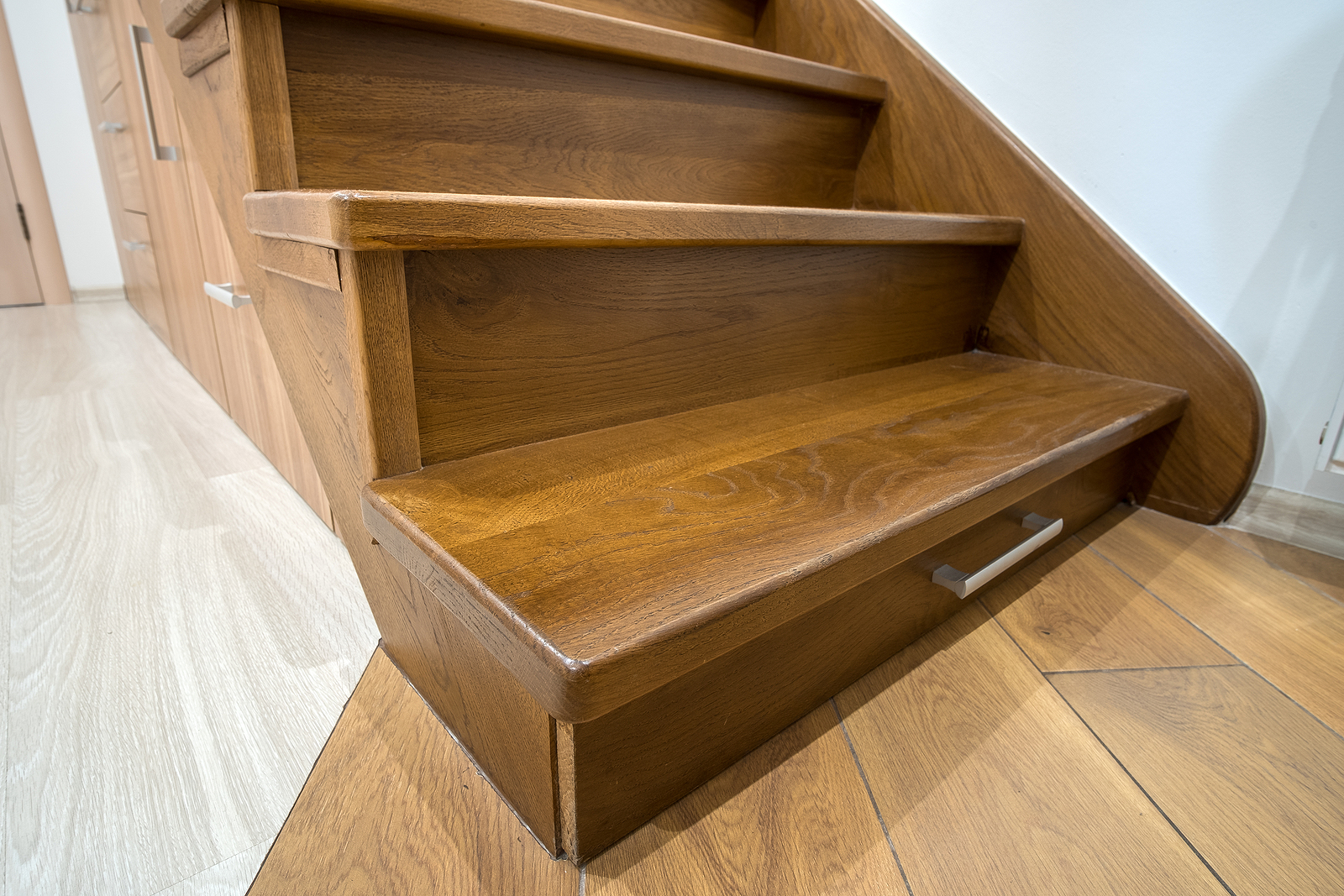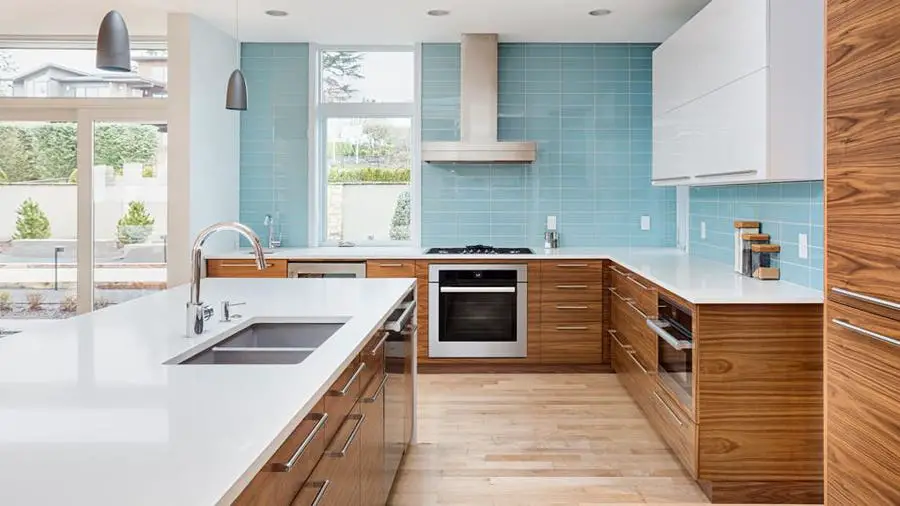For cabinets, the most commonly used plywood size is 3/4 inch. Plywood is a versatile and durable material for cabinet construction, offering stability and strength.
Plywood is an essential material in cabinet construction, providing the necessary stability and strength for a long-lasting and functional cabinet. When it comes to the size of plywood needed, 3/4 inch thickness is the most commonly used among cabinet builders.
This dimension provides ample support while considering factors such as weight and aesthetics. Plywood’s versatility makes it suitable for various cabinet components, including shelves, doors, and carcasses.
It is a cost-effective option that offers durability, as well as resistance to warping and damage. Whether you are considering a DIY cabinet project or seeking professional craftsmanship, understanding the appropriate plywood size for cabinets is key to ensuring a successful outcome.
Contents
Standard Plywood Sizes
Discover the perfect plywood sizes for cabinets to ensure a precise fit and sturdy construction. Standard plywood dimensions for cabinets typically range from 4×8 feet to 5×12 feet, providing versatility for various project requirements.
Choosing the right size plywood is crucial for achieving seamless and durable cabinet installations. When it comes to building cabinets, choosing the right plywood size is crucial. Standard plywood sizes are available in full sheet, half sheet, and quarter sheet options.
Each size has its own benefits and considerations, depending on the specific project requirements. Let’s take a closer look at the different plywood sizes commonly used for cabinets.
Full Sheet Plywood
Full sheet plywood is the largest option available and measures 4 feet by 8 feet. It provides ample coverage for larger cabinet projects, making it the preferred choice for many builders.
Its larger size allows for minimal joints and seams, resulting in a cleaner and sturdier cabinet construction. Full sheet plywood is often used for large kitchen cabinets, built-in wardrobes, or any other cabinetry that requires extensive coverage.
However, it’s important to note that handling full sheet plywood can be challenging due to its size and weight. If you don’t have the necessary equipment or assistance, it may be difficult to maneuver and transport. Consider these factors when deciding whether full sheet plywood is suitable for your cabinet project.
Half Sheet Plywood
If you’re working on a smaller cabinet project or have limited space, half sheet plywood may be the ideal choice. It measures 4 feet by 4 feet, providing enough coverage for medium-sized cabinets.
This size is more manageable and easier to handle compared to full sheet plywood. Half sheet plywood also allows for more flexibility in terms of transportation and storage.
Since it’s smaller, it can easily fit into vehicles and tight spaces. Additionally, it’s more cost-effective than full sheet plywood as you would need less material.
Quarter Sheet Plywood
For compact cabinet installations or specialized projects, quarter sheet plywood is the go-to option. It measures 2 feet by 4 feet, making it perfect for small cabinets, drawers, or shelves. This size is commonly used for bathroom vanities, pantry cabinets, or any other space-saving designs.
Due to its smaller dimensions, quarter sheet plywood is lightweight and easy to manage. It offers greater precision and flexibility during the installation process.
However, keep in mind that using quarter sheet plywood for larger cabinets may result in more joints and seams. In summary, standard plywood sizes of full sheet, half sheet, and quarter sheet offer various options for cabinet construction.
Consider the size of your project, transportation capabilities, and desired cabinet design to determine which plywood size suits your needs. Ensuring the right plywood size will not only save you time and money but also ensure a sturdy and durable cabinet installation.
Choosing The Right Thickness
Factors To Consider
Budget, durability, and preferred style are important factors.
Common Plywood Thicknesses
Thicknesses usually range from 1/4 inch to 3/4 inch.
Determining The Dimensions
Determining the dimensions for the plywood used in cabinet construction is crucial for ensuring a precise and professional outcome.
Getting the right size plywood for cabinets begins with accurate measurements of the cabinet space, accounting for overhang, and allowing for back and side panels.
Measuring The Cabinet Space
Start by measuring the height, width, and depth of the cabinet space. Use a tape measure to ensure accuracy, and record the measurements. Take into account any items such as trays or utensil organizers that may impact the interior dimensions.
Accounting For Overhang
When determining the plywood dimensions, consider any overhang that the cabinet doors or drawer faces may require.
Measure the extent of the overhang needed and factor this measurement into the plywood dimensions. Cut the plywood to the required size, accounting for this overhang to ensure a seamless fit.
Allowing For Back And Side Panels
Don’t forget to allow for the thickness of the back and side panels when calculating the plywood dimensions. This ensures that the plywood fits snugly and provides structural support for the cabinet.
Measure the combined thickness of the back and side panels and incorporate this into the dimensions of the plywood pieces.
Special Considerations
When it comes to choosing the right plywood for cabinets, there are several special considerations to keep in mind.
It’s crucial to ensure that the plywood used for cabinets meets specific requirements to guarantee the longevity and durability of the cabinets. Special considerations include factors like moisture resistance, plywood grades, and quality.
Waterproof And Moisture-resistant Plywood
Moisture is one of the biggest threats to the longevity of cabinets. It’s essential to use waterproof or moisture-resistant plywood for cabinets to prevent any damage caused by water exposure or humidity.
This type of plywood is typically made with a special adhesive that repels water, making it perfect for use in areas prone to moisture, such as kitchens and bathrooms.
Plywood Grades And Quality
When selecting plywood for cabinets, it’s important to consider the grades and quality of the material. Different grades of plywood are available, ranging from A to D, with A being the highest quality and D being the lowest.
High-quality plywood ensures that the cabinets will be sturdy and long-lasting, while lower quality plywood may not provide the same level of durability.
Cutting And Joining Plywood
In the process of building cabinets, cutting and joining plywood is a crucial step that requires precision and careful planning.
By employing the right tools and techniques, you can ensure the panels fit together seamlessly, creating sturdy and visually appealing cabinets.
In this article, we will explore the tools and techniques involved in cutting and joining plywood for cabinets.
1. Tools And Techniques
Before diving into the process of cutting and joining plywood, it is essential to have the appropriate tools on hand. Here are some tools commonly used:
- A circular saw or table saw: These power tools are ideal for making straight and accurate cuts in plywood.
- A straightedge or guide: Used to ensure the cuts are precise and straight.
- A drill/driver: Necessary for creating holes for screws or dowels.
- A jigsaw: Useful for intricate cuts or curved edges.
Now that you have your tools ready, let’s explore some techniques that will assist you in achieving clean and seamless cuts.
2. Using Joints And Edges
Joining plywood panels together requires reliable joints and edges. Here are a few commonly used methods:
- Butt joints: These joints involve simply joining two plywood panels together to create a right angle.
- Dado or groove joints: In this technique, a groove is cut into one panel to fit the edge of the other panel.
- Rabbet joints: These joints involve cutting a groove on the edge of one panel to fit the other panel’s edge.
- Dovetail joints: Often used for drawer construction, dovetail joints interlock and provide strength and durability.
With these joint techniques at your disposal, you can choose the one that best fits your project requirements and skills.
Additionally, paying attention to the edges of the plywood will ensure a neat and polished finish. Edging techniques such as applying edge banding or using solid wood trim can enhance the appearance of your cabinets.
Remember, the key to successful cutting and joining lies in accuracy, precision, and attention to detail. Taking the time to measure twice and cut once will save you from costly errors and rework.

Tips For A Perfect Fit
Choosing the right size plywood for cabinets is crucial for a perfect fit. Consider the thickness and the grade of the plywood to ensure it can bear the load and provide a sturdy construction.
It’s important to measure accurately and consult a professional if needed to achieve the best results.
Test-fitting The Plywood
Before you embark on your cabinet building journey, it’s crucial to ensure that you have the right size plywood for a perfect fit. Testing the fit of the plywood is essential to avoid any mishaps during construction.
- Start by measuring the height and width of the cabinet opening using a tape measure. Be sure to measure multiple times to get accurate measurements.
- Next, select your plywood sheet, keeping in mind the thickness required for your cabinets. Common plywood thicknesses for cabinets range from 3/4 inch to 1/2 inch.
- Once you have your plywood sheet, cut it to the exact dimensions of your cabinet opening. Use a circular saw or a table saw to achieve precise cuts.
- Now comes the crucial step of test-fitting your plywood. Place the cut piece inside the cabinet opening and ensure that it fits snugly without any gaps or overhangs.
By test-fitting the plywood, you’ll catch any measurement errors beforehand and have the opportunity to make necessary adjustments before moving on to the next steps.
Finishing And Sealing The Edges
Once you have your plywood pieces cut to the correct size and confirmed their fit, it’s time to focus on finishing and sealing the edges. This step ensures the longevity and durability of your cabinets.
Here are some tips to help you achieve a professional and polished look:
- Smooth the edges of the plywood using sandpaper or a router for a clean and professional finish. This step also helps prevent splinters and rough edges.
- To seal the edges and protect them from moisture and damage, apply an edge banding or veneer tape. Use a hot iron to attach the tape, ensuring a secure bond.
- After applying the edge banding, trim off any excess tape using a utility knife. Be careful not to damage the plywood surface while trimming.
Remember, finishing and sealing the edges not only enhances the aesthetic appeal of your cabinets but also safeguards them from wear and tear.

Frequently Asked Questions On What Size Plywood For Cabinets
Should You Use 1 2 Or 3 4 Plywood For Cabinets?
For cabinets, use 3/4 plywood for sturdiness and durability. Thicker plywood adds strength and supports heavy loads effectively.
What Thickness Of Plywood Do You Use For Cabinets?
For cabinets, use ¾ inch plywood as it provides durability and stability for the construction.
What Kind Of Plywood Do You Use For Built In Cabinets?
For built-in cabinets, use hardwood plywood with a high-quality veneer for durability and aesthetic appeal.
Is 1 2 Inch Plywood Strong Enough For Drawers?
Yes, 1/2 inch plywood is strong enough for drawers. It’s a common choice for drawer construction due to its durability and weight-bearing capacity. However, for heavier items or larger drawers, a thicker plywood may be recommended.
Conclusion
Ensure your cabinets are sturdy by choosing the right plywood size. Seek professional advice if unsure.
Remember, the quality of the plywood impacts the durability and appearance of your cabinets. Make an informed decision to elevate your space with the ideal plywood for your cabinet project.

